What is picture letter/what is a picture letter brush?

Picture letter writing is a kind of letter that is literally “drawing a letter with a picture and sending it. In short, as long as you can draw the picture you want to draw and draw the lines you want to draw, you “don’t have to use a brush,” a pencil, a splittable pencil, or anything else!
The end
I am going to continue, because the craftsmen will get angry with me if I write, “I am not a painter, but a pencil or a splittable pencil. Basically, it remains the same that you can use whatever you want to draw with.
So what exactly is a picture letter brush for?
Suddenly, I (the factory manager, in case you are wondering) am not good at drawing. I am not good at it.
However! Regardless of whether you are good at drawing or not, you can still draw pictures with flavor! That’s what picture letter brushes are for!
What I mean is that even if you try to draw beautifully, if your ability to draw realistically is poor or if you are not good at drawing, you will not be able to draw as you want, or you will tend to lack something, such as rough edges that stand out and lack power. It is said that it is better to be bad at picture letters, but when you actually write with a pencil, you will be astonished at your own ability. (Note: this is my case!).
) The picture letter brush can compensate for this and make it easy for anyone to draw a line with flavor!
(Note: This is my case!) I have been talking to myself so far, so if you are offended, please forgive me.
For more information on picture letter, please refer to Wikipedia (picture letter).
About picture letter brushes
Our company makes three types of brushes for drawing lines for picture letter.

絵手紙用筆H 茶軸
ETEGAMI-FUDE-H-brown
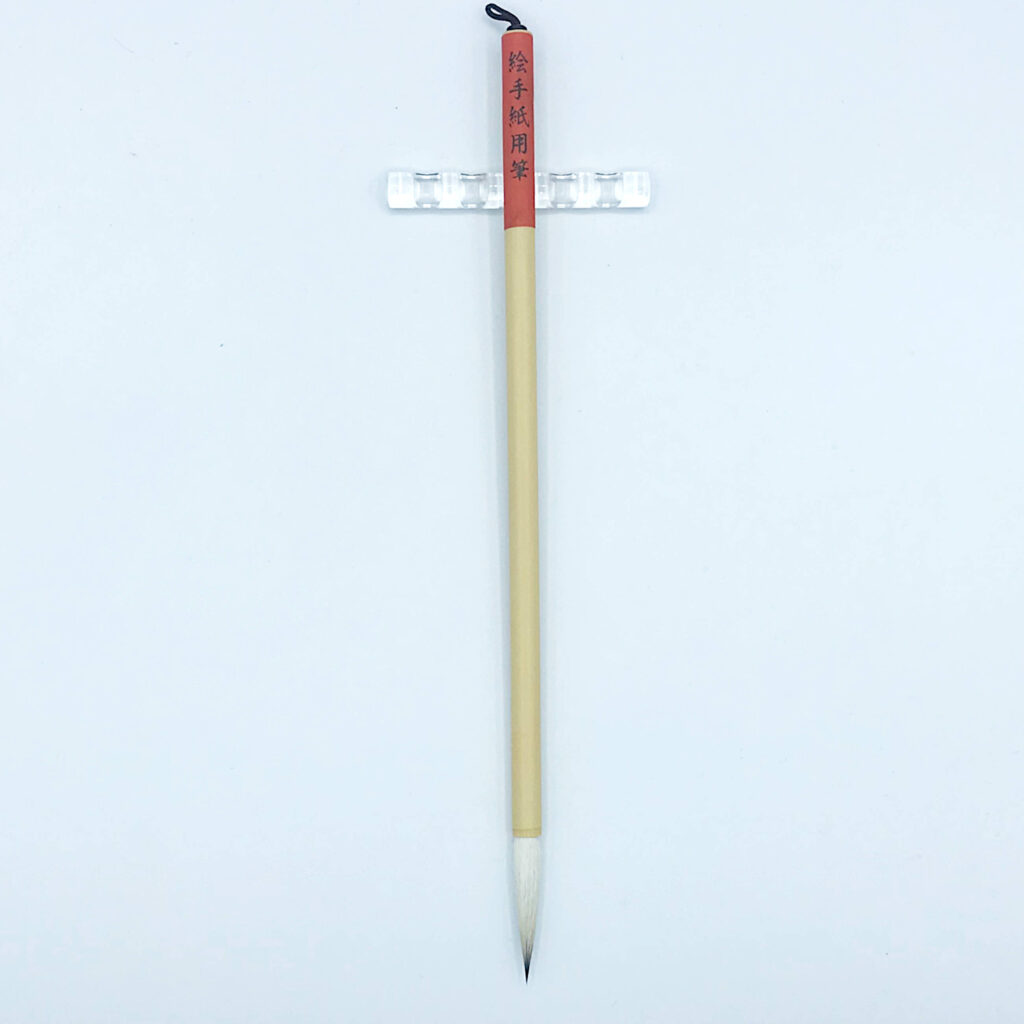
絵手紙用筆S 白軸
ETEGAMI-FUDE-S-white
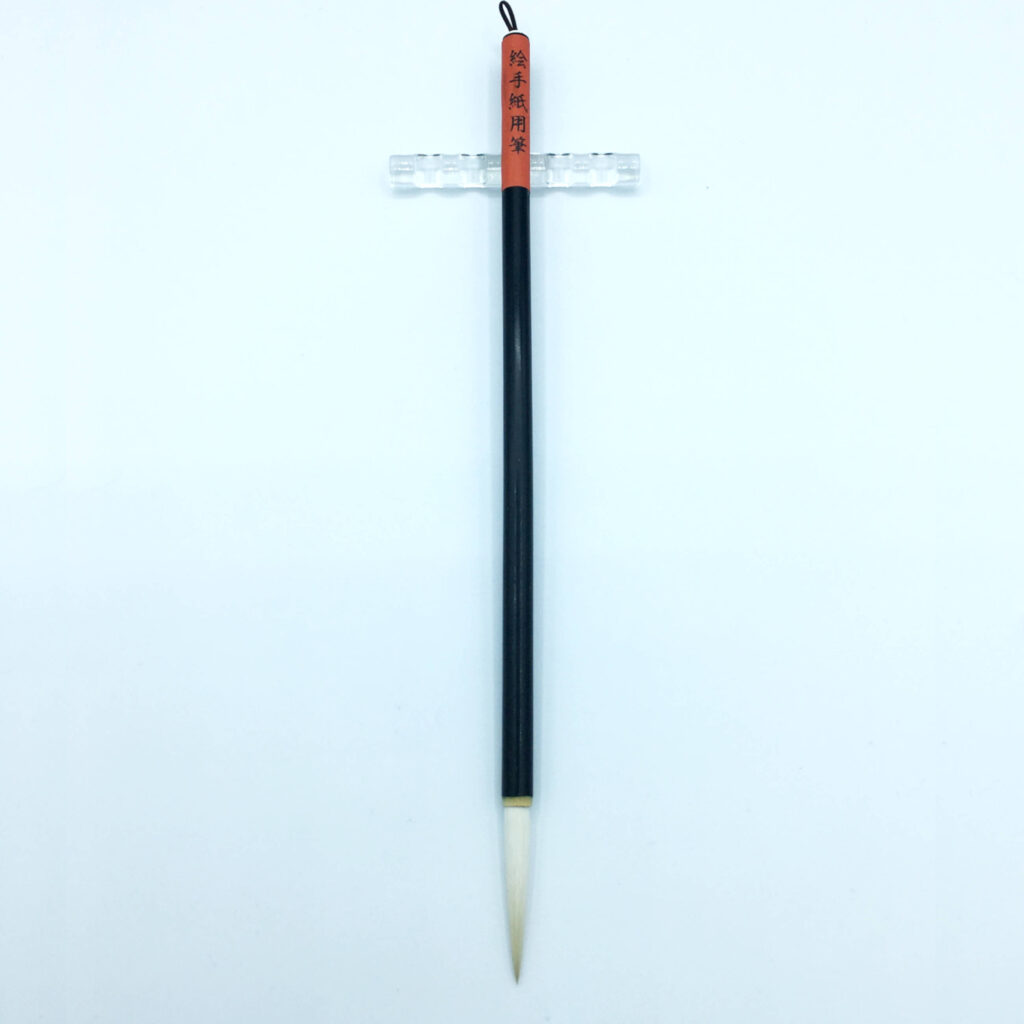
絵手紙用筆 黒軸
ETEGAMI-FUDE-black
Each has a different drawing style, but they all have one thing in common: they are able to draw lines with a taste that “makes lines look bad.

This is a brush strokes chart (like a recipe) for picture letter, but today I’m going out on a limb and making it public!
Yes, I’m sorry, it’s mostly mosaic.
What? Is my handwriting dirty? I’ll be careful from now on…
Each brush has its own hair grouping chart (we have more than 400 kinds of hair grouping charts, and we currently produce about 250 kinds), and we make our brushes based on these charts, but I’d like to talk about this in another article someday.
On the left side of the chart are the types of animal hairs, in the middle is the quantity, and on the right side are the cut lengths.
By mixing various animal hairs of different hardness, thickness, and content, the tip of the brush can be hard to draw thin lines easily, or the tip can spread out when pressed to a certain degree.
In the case of picture letter brushes, the tips of the bristles are designed to be stiff, but when pressed down to a certain point, the bristles spread out and become flaky, creating a more pleasing line.
The following is a brief explanation of the differences between the three types of picture letter brushes.
絵手紙用筆H 茶軸
Etegami Fude H brown

The tip of this brush is stiffer than other picture letter brushes, making it relatively easy for those who are not used to using brushes to draw a steady line. Of course, it is made in such a way that the thickness of the line changes moderately “rampant” because a clean line would be tasteless. For those who are used to picture letter drawing, the violent lines may not be enough. For those who are somewhat familiar with it, it can be used as a hard textured line drawing brush. It is easy to draw fine lines, etc. So the “H” in the picture letter brush H brown shaft means hard, capable of drawing funny lines!
——-
A brush master’s opinion
When drawing picture letter lines, hold the brush down to this point! This is a corrective brush for those who have never painted picture letter before to get a feel for how to draw a line. Beginners may appreciate this brush.
——–
You are indeed a teacher. He has completely divined the design concept. The figure below is a quick test drawing by the master, but the actual product has whirlpools drawn in a smaller area than it looks. I also tried, but could not draw it.
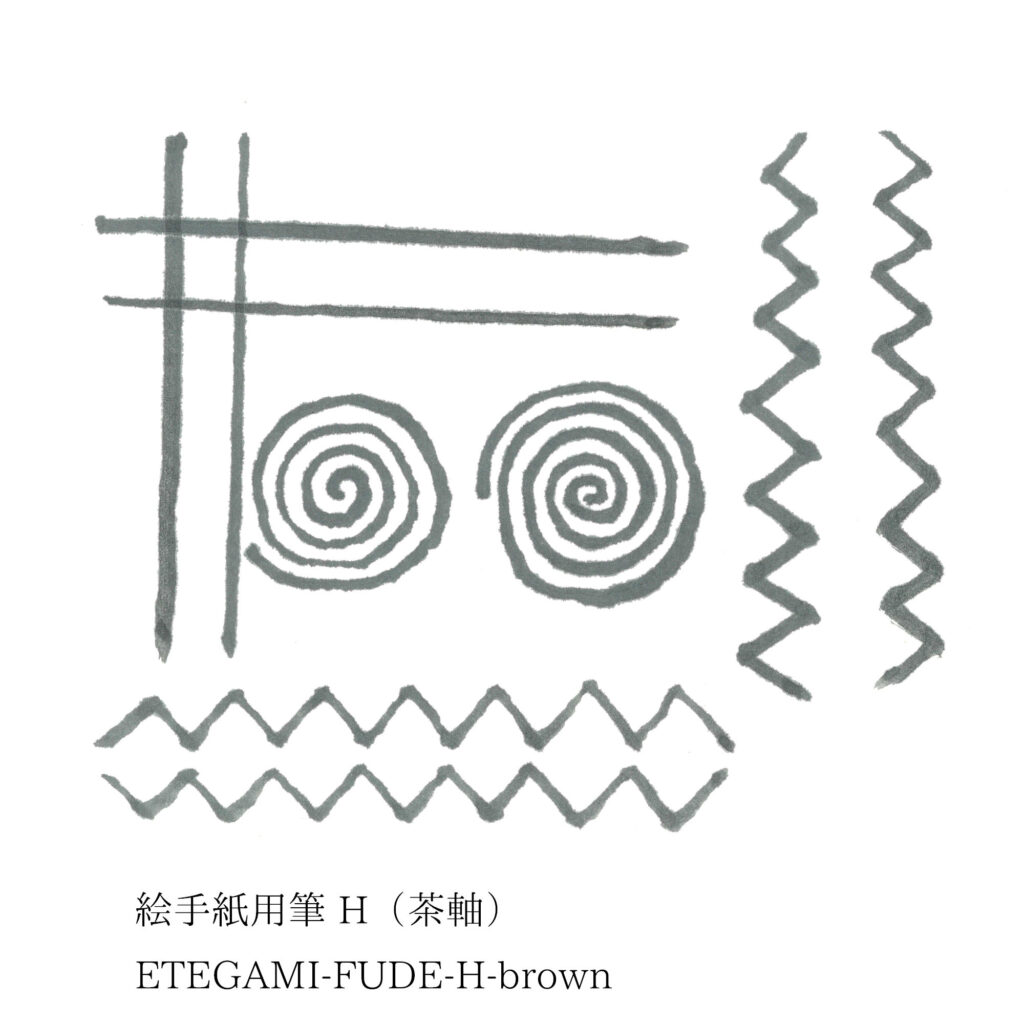

絵手紙用筆S 白軸
Etegami Fude S White

The tip of this brush is softer than that of the brown-axis brush, and the affinity between the paper and the tip neck is higher, so while it can draw lines of various sizes, it requires more skill to draw lines of a certain thickness. This brush is recommended for those who have become accustomed to using brushes and for those who want to draw lines that are a little rough and broken. Picture Letter Brush S The “S” in “white shaft” refers to a very strange s (okay, I’m getting a little insistent here) software!
——-
Impressions of a brush-user expert
Once you are no longer a beginner, this brush is super convenient because it bites into the paper on its own without you having to think about it. It is suitable for a very wide range of users. For those who are skilled, it has a cheat feeling (can draw with an advantage).
But why is it that the more you draw, the more ink soot is absorbed by the brush? Is it a specification? Is it a trick of the finishing glue?
——–
You are indeed a teacher. The extra advanced interpretation is beyond comprehension. The ori will improve with a little use, but let’s call it a finishing glue prank. The following figure is a test drawing by a master artist. The thinning at the end of the line tells us that the soot is being absorbed. Please ignore it and use it as you wish.
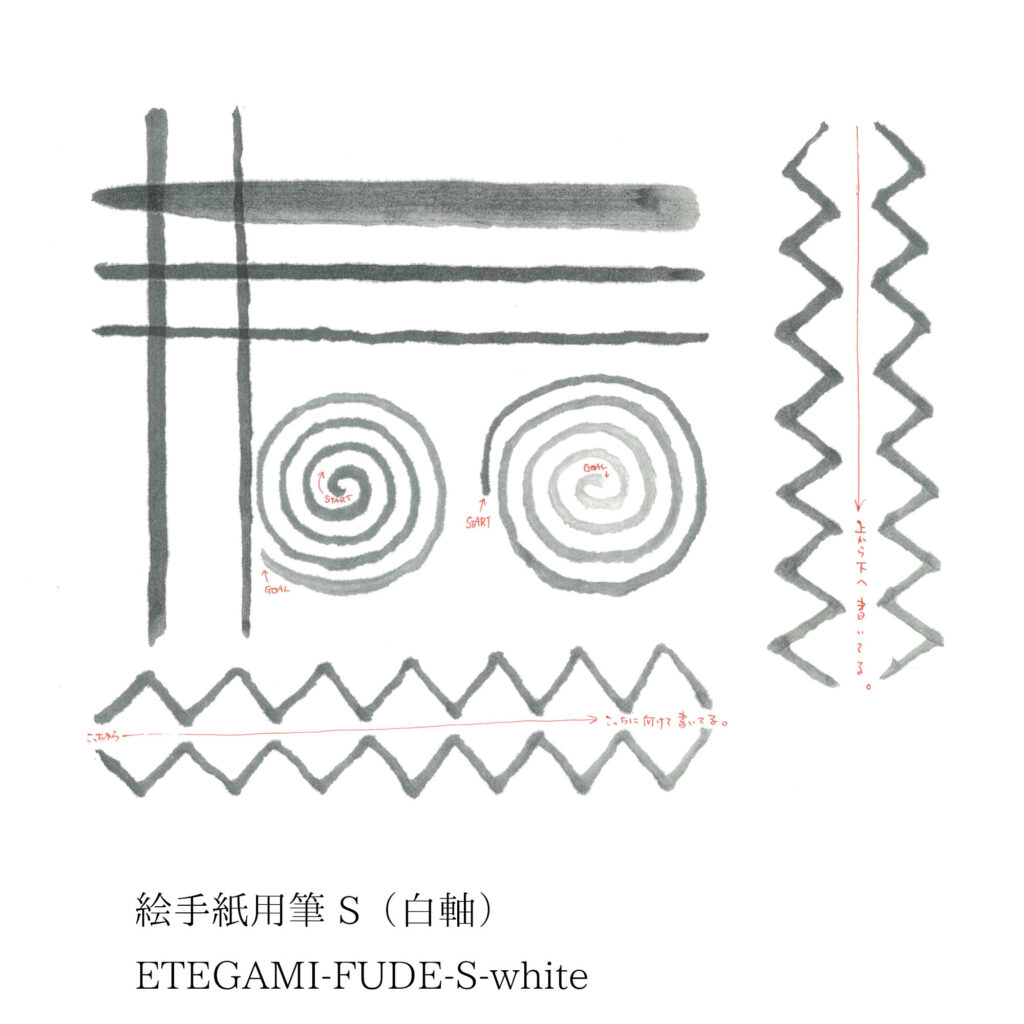
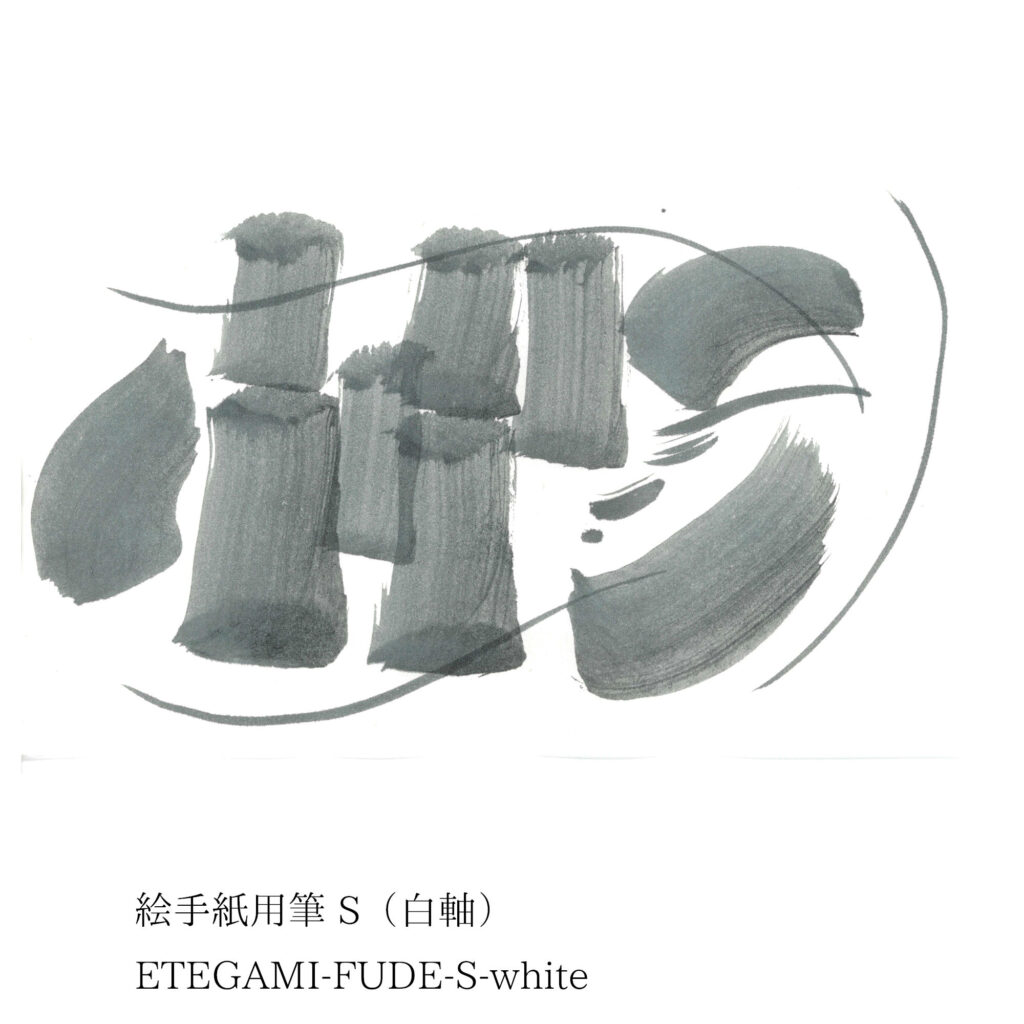
絵手紙用筆 黒軸
Etegami Fude black

The entire head of this brush is soft, and it takes a lot of skill to draw a line of a certain thickness. Sometimes there are people who want a brush that they cannot control, and this is exactly the brush for them.
——-
A brush-user’s impression
If you keep a half sheet of paper or tissue in your hand and adjust the amount of ink on the tip a bit before you start drawing, it’s the best. It will keep biting into the paper and the ink will not stop, so you can keep drawing with the same momentum. However, beginners will laughingly disagree, because of the three types of brushes, this is the one that moves the most “unexpectedly,” so it’s fun!
If you get frustrated when things don’t go the way you want them to, the white brush may be better for you.
——–
You are indeed a teacher. He seems to be in a “dominant” world that I can’t reach. The following figure is a test drawing by a master, but I could not draw such a stable line.
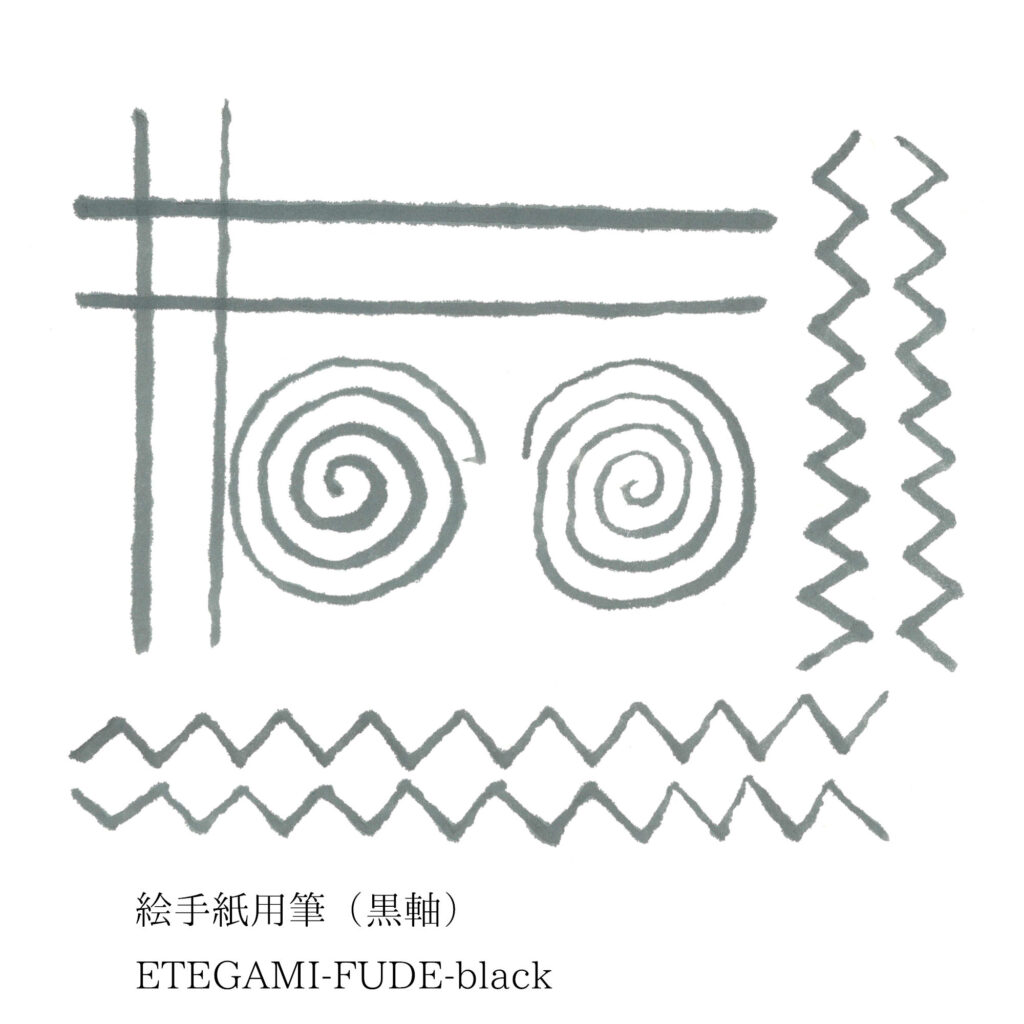
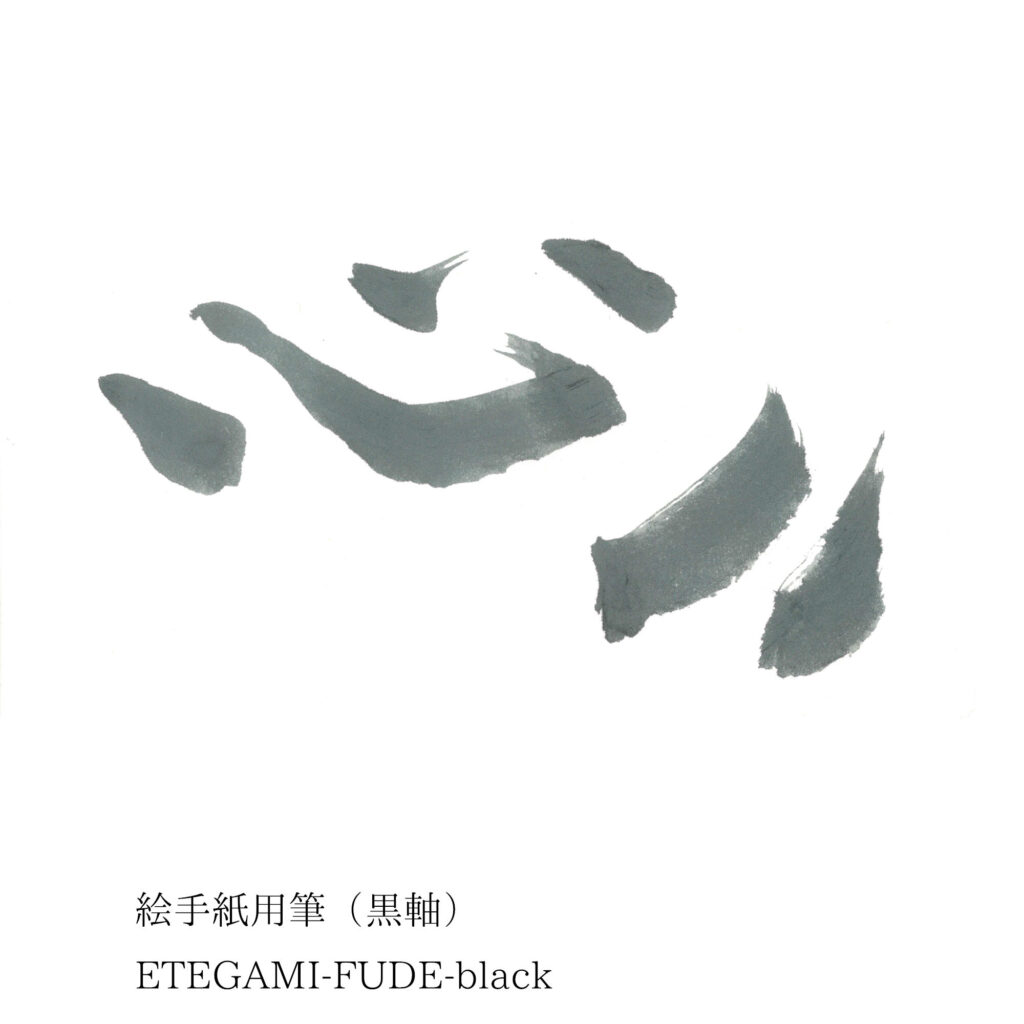
In closing
I would like to apologize to the master brush stylist who helped me in writing this article for my rude use of language. I am also sorry to the previous president in heaven who created this brush, for introducing you like this! Please do not be offended.
